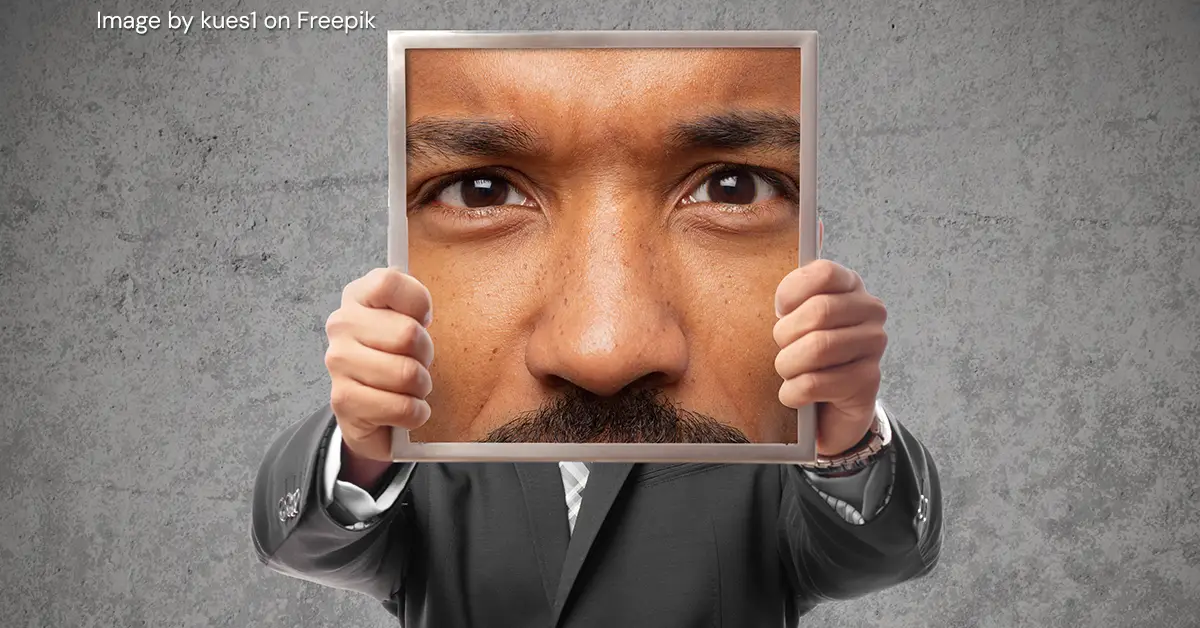By Penny Zenker, aka The Focusologist
In 2013, over the course of 55 days, an estimated 120 million people attended the Kumbh Mela festival in India. That’s the population of California, Texas, New York, Florida, and Pennsylvania – the five most populous states – combined.
Unsurprisingly, this Hindu pilgrimage event has been called the largest human gathering on Earth. It occurs every 12 years, so if you want to be part of the planning committee, now’s the time to sign up for 2025!
For event planners, managing an event of this scale might seem like a daunting task, almost insurmountable. You might be thinking about all the things that could go wrong. But the truth is even the most complex projects and problems can be managed with a simple three-step practice to dynamically reassess and ensure things run smoothly and attendees are happy.
A REFRESHER ON THE RESET MINDSET
In the last article, we introduced the Reset Mindset, a framework designed to enhance your ability to reassess and adapt to changes in your circumstances and environment. As event planners, you’re no strangers to unexpected hiccups and surprises. The Reset Mindset empowers you not just to handle these challenges but effectively manage them with less stress and even to turn them into opportunities for creating memorable experiences.
Dynamic reassessment is powered by a simple structured practice, a Reset Practice. The Reset Practice has three steps:
- Step back
- Get perspective
- Realign
Just to be clear, this practice is not reserved for when something goes wrong. It can be used to avoid burnouts or breakdowns and to learn from our successes just as much as to mitigate problems. It is how we dynamically adapt, learn, and grow. All three steps are essential to the best result.
As an event planner, when you integrate these steps into your daily routine, you can break down complex projects and problems into clear priorities, manageable tasks, and creative solutions. Let’s dive deeper into each step and explore how you can use them to manage complex challenges.
While I have broken these steps out, they can also be interconnected depending on the methods used.
STEP ONE: Step Back
The first step in your Reset Practice – Stepping Back – is akin to calling a timeout in a ballgame; it stops the flow of the game. Stepping back creates space to objectively review recent plays, identify errors, and refocus the next plays. This space also enables you to expand your awareness and reconnect with your objectives. It’s easy to get lost in the minutiae of logistics, schedules, and client demands; to lose sight of the overarching vision and needs of the attendees. When we’re under pressure, our emotions can get the best of us. Studies show that when emotions are high, intellect is low. And when intellect is low, we focus on being right instead solving the problem, or we catastrophize the problem, and we fail to use creative thinking. Energy is contagious, so however you think and behave – whether positively or negatively – you will have a ripple effect on your project team.
By stepping back and taking an intentional pause, event planners can heighten their awareness, detach from the emotions, and reassess overwhelming details with fresh eyes.
The power of the pause is also an important way to avoid burnout. It creates the space necessary to clear the mental fog that accompanies intensive work.
Without the built-in pause and space of Stepping Back, there’s no room for awareness and clarity to return. Great planners, project managers, and leaders STEP BACK, so they can define problems, clarify priorities, and ensure that every detail serves the bigger picture, resulting in more coherent, impactful, and successful events.
STEP TWO: Get Perspective
If Stepping Back is calling the time-out, then Step Two – Get Perspective – is the huddle on the sideline during the timeout. It’s the give-and-take between coaches and players, the review of what’s been going on during the game and why things are (or aren’t) going as intended. Everyone shares their points of view. Problems are identified. Solutions are offered. Perspective is gained.
Just as a coach uses a timeout to gather the team and reassess the game plan, event planners can use this pause to regroup and refocus.
When you GET PERSPECTIVE, you are broadening awareness while simultaneously digging deeper to make new connections. You are reassessing your options by seeking new inputs. You are evaluating different perspectives to solve problems and create new opportunities.
Harvard and the University of Pennsylvania did a study on perspective-taking and the importance it has on leadership, and discovered it is an undervalued leadership tool. It helps not only leaders like yourself manage risk and stimulate innovation, but it also supports inclusion and diversity, positively impacting team engagement.
Brainstorming as a team often results in new creative solutions. One person might be more informed about technology solutions and suggest a great new way to poll the audience, while another may have contacts to great speakers, and yet another has engaging ideas of how to use an event app to enrich the experience of the attendees.
Especially during a crisis, when we are cognitively limited by the fight, flight, or freeze effects of stress, we need perspectives from vantage points other than our own to get us unstuck and able to move in new, effective directions.
STEP THREE: Realign
If step one is calling the time-out (Step Back), and step two is huddling up (Get Perspective), then step three is sending the team back out into the game with new strategies (Realign). How’s that old saying go? “Insanity is doing the same thing over and over again and expecting different results.” No coach keeps their job for long if they continue to run a play the opposing defense stuffs every time. Activating the Reset Practice culminates in Realignment, in calling a new play.
When you REALIGN, your actions and decisions realign with your values, goals, and new insights. This could involve tweaking your event layout, revising your schedule, or changing how you communicate with your team.
But realignment is not a one-and-done event. It is an ongoing process of dynamic reassessment. Remember, the three steps make the complex simple. You must call the time-outs, lead the huddle, and send the team back out after realigning them with the shared goal.
I always say, it is not about how complex a problem may be but how simply you approach it. Simplicity will ensure that this practice is quickly and readily available, no matter how stressful, uncertain, or emotional the situation.
THE RESET PRACTICE IN ACTION
To illustrate how the Reset Practice can be applied in real-world scenarios, let’s look at a few examples from event planners who used these steps to navigate unforeseen challenges successfully.
The Melting Ice Sculpture
One event planner had arranged for a stunning ice sculpture to be the centerpiece at the reception of a high-profile wedding. But the air conditioning in the venue couldn’t keep the sculpture solid. By the time the guests arrived, it was more puddle than sculpture. Here’s how she applied her Reset Practice:
- She stepped back. The planner took a moment to step back and reassess the situation, recognizing that the ice sculpture was intended to enhance the event’s atmosphere, not be the focal point.
- She got perspective. She consulted with the team and considered alternative ways to repurpose the ice. The goal was to create a memorable experience, even if the sculpture itself was no longer feasible.
- She realigned. The planner decided to use the melting ice as a cooling station for drinks and added a humorous sign that read, “Artistic Interpretation in Progress.” The guests appreciated the creative solution, and the event remained a success.
The Duck Invasion
Another event planner had organized an evening under the stars for an outdoor gala, and just as the live music began, a flock of ducks crashed the party. They landed in the venue’s pond and quacked their heads off. Here’s how the Reset Practice helped:
- He stepped back. The planner took a moment to assess the situation, acknowledging that chasing the ducks away might be even more of a distraction.
- He got perspective. The planner brainstormed with the team and decided to focus on what they could control and embrace the situation in a new way. They recognized that the ducks could be turned into a charming, unexpected feature and theme.
- He realigned. The band transitioned into songs about flying, and after checking with the chef, the menu was adjusted to include “Duck a l’Orange.” What could have been a disruption became a memorable and laugh-filled part of the evening.
The Power Outage
And a third event planner had a charity dinner in a ballroom, which was to include a laser light show. But, of course, just as the show was about to begin, the building lost power. Did she panic? For a brief second, sure, but then she engaged in her Reset Practice.
- She stepped back. The planner paused to evaluate the situation, realizing that the power outage was beyond their control. Instead of freaking out she looked at how to make the most of the situation. She chose to focus on how to creatively approach the situation and make it about ambiance.
- She got perspective. She consulted with the team and realized they had candles in the table centerpieces. Perfect, candles could set a cozy mood lighting.
- She realigned. They transformed the evening into an intimate, candelit affair. The guests enjoyed the candle-lit ambiance so much that even when the power was restored, they requested the lights remain off. The event turned into a cozy, memorable experience.
The Missing Keynote Speaker
Another event planner shared how they planned a conference for three thousand people, and with a mere three hours left, he was informed the kickoff keynote speaker’s flight had been cancelled. There was no way the speaker could make it to the venue on time.
Here’s how the Reset Practice delivered results:
- He stepped back. The planner took a deep breath to calm down and acknowledge it would be possible to find an alternative.
- He got perspective. The planner had a relationship with a speakers’ bureau and also knew of a directory of speakers that could be searched by location. He and his team divvied up the communication, and quickly found a speaker who was not only available on super short notice, but was located only an hour away. He discussed the situation with the client and proposed a few options. The keynote could be moved to the following day’s program or to the lunchtime slot, or they could bring in this local speaker to deliver the morning kickoff.
- He realigned. The client chose not to change the whole program and bring in the local speaker. The local speaker spoke on the phone with the planner on the way to the venue to get up to speed on the client and the attendees and delivered a fantastic talk that connected with the attendees and set the tone for the conference.
CONCLUSION
The beauty of the Reset Practice lies in its simplicity. By regularly stepping back, gaining perspective, and realigning, you can manage even the most complex events and situations with greater ease. This practice not only helps you navigate unexpected challenges but also turns potential setbacks into opportunities for creative solutions.
Whether you’re planning a small gathering or an event as grand as the Kumbh Mela, integrating these three steps into your workflow can transform how you and your team handle complexity. Embrace the Reset Practice, and watch how it simplifies the seemingly insurmountable, allowing you to deliver exceptional experiences regardless of the obstacles you face.
Read Part One of this series here and learn more about my upcoming book, The Reset Mindset, here.
About the Author

Penny Zenker is The Focusologist, a sought-after international speaker and best-selling author of The Productivity Zone: Stop the Tug of War with Time. As a master NLP practitioner and neurostrategist, she integrates the elements of thought, communication, and behavior to provide strategies for adapting to change and maximizing results. Penny’s expertise is derived from building and selling a multi-million-dollar business, managing strategic projects and business turnarounds as a senior executive at one of the world’s leading market research firms, and later working as a Tony Robbins strategic business coach for companies around the world.
The views and opinions expressed by blog authors are those of the authors and do not necessarily reflect the official policy or position of the International Association of Exhibitions and Events®. Any content provided by our bloggers or authors are of their opinion. All content provided on this blog is for informational purposes only. IAEE makes no representations as to the accuracy or completeness of any information on this site or found by following any link on this site. IAEE will not be liable for any errors or omissions in this information nor for the availability of this information.


